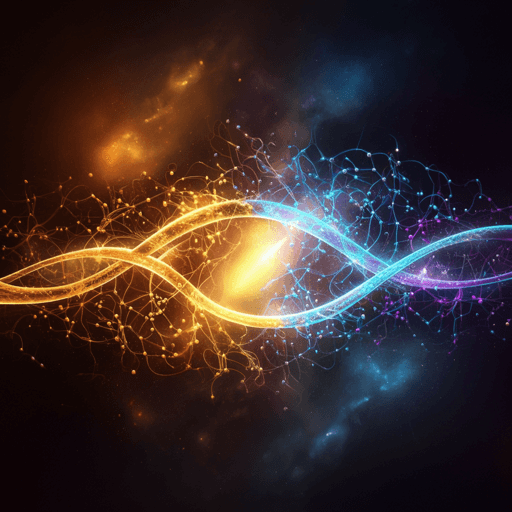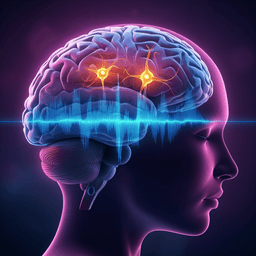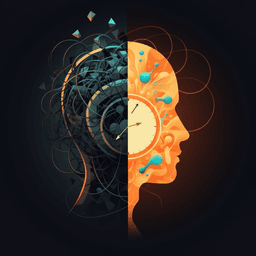
Biology
Parallel processing of past and future memories through reactivation and synaptic plasticity mechanisms during sleep
K. Ghandour, T. Haga, et al.
Everyday memories emerge from organized hippocampal activity: in male mice, CA1 neurons show synchronous prelearning sleep patterns that align with future engram cells (preconfigured ensembles), while postlearning offline periods reshape nonengram cells via potential synaptic depression and scaling to prepare for new memories. This research was conducted by Authors present in <Authors> tag.
~3 min • Beginner • English
Introduction
The study investigates how the brain selects neuronal populations (engram cells) to encode current experiences while preparing for future learning. Prior work shows that engram cells, identifiable by immediate early gene expression and causal optogenetic manipulation, exhibit characteristic activity during learning and can be biased by CREB-dependent excitability and intrinsic network dynamics. Sleep- and rest-related reactivation is essential for consolidation, yet the role of sleep in configuring networks for upcoming memories is unclear. The authors hypothesize that sleep supports both reactivation of past engrams and preparation of future engrams by reorganizing nonengram populations, and ask whether prelearning activity predicts engram allocation and whether postlearning sleep reshapes nonengram cells to become future engram cells.
Literature Review
Background literature emphasizes memory allocation mechanisms wherein neurons with higher excitability are preferentially recruited into engrams; engrams can be labeled via immediate early genes and manipulated to affect memory. Preplay and intrinsic hippocampal dynamics suggest preconfigured assemblies exist prior to experience, potentially guiding future engram formation. Sleep is established to support consolidation via replay during NREM (SWRs) and REM theta activity, and reactivations relate to learning, creativity, and planning. Damage to hippocampus impairs both remembering the past and imagining the future, indicating overlapping mechanisms. However, the temporal dynamics by which sleep could not only consolidate existing memories but also configure circuits for future learning remained unresolved. Prior studies also propose dynamic engrams with evolving subensembles and suggest excitability and homeostatic mechanisms can bias allocation and linking across time.
Methodology
In vivo Ca2+ imaging and engram labeling in freely moving male c-fos-tTA × Thy1-G-CaMP7 double transgenic mice were combined with EEG/EMG to segment sleep stages. A TRE-KikGR lentivirus was injected into hippocampal CA1; in OFF-DOX conditions, activated cells express KikGR, allowing engram identification by snapshot 24 h after learning. KikGR was photoconverted (365 nm) to manage visibility for imaging alongside G-CaMP7. A miniature microscope (GRIN lens; nVista) recorded Ca2+ transients at 20 Hz. Sleep stages (NREM/REM) were scored using EEG/EMG. Experimental sessions: prelearning sleep (N1, R1), initial learning in context A (A), postlearning sleep (N2, R2) on Day 1; retrieval in A' and new learning in context B (B) on Day 2. An additional cohort included awake/sleep sessions on Day 0 and Day 1 around learning to dissect state dependency. Calcium movies were motion-corrected and processed; active cells were extracted using HOTARU automated sorting. Engram cells were identified by spatial overlap of KikGR+ ROIs with HOTARU-detected active cells 24 h after A. Population activity patterns (ensembles) were extracted via non-negative matrix factorization (NMF), with model order chosen by AICc. Ensemble similarity across sessions was quantified using cosine similarity; a normalized dot product threshold ≥0.6 defined matches, yielding a Matching Score (MS) per session pair. Population similarity across sessions was also quantified using Population Vector Distance (PVD; restricted Mahalanobis distance). Temporal stability within sessions was assessed by correlation matrix overlap metrics using sliding windows. Unsupervised PCA-ICA analysis on nonengram populations identified coactivity patterns. Co-occurrences between subgroups (common/specific engrams; engram-to-be/other nonengram) were computed after binarizing Ca2+ events (>3 s.d.) and 250 ms binning; co-occurrence rates were normalized for cross-session comparison. Definitions: Preconfigured-aligned, stand-by, online-emerging, and isolated ensembles were classified based on activity before/after learning A. Engram-to-be ensembles were identified among nonengram cells as B-ensembles matching postlearning sleep (N2/R2) but not prelearning sleep (N1/R1); constituent active cells were designated engram-to-be. Engram cells from A were subclassified as common (also active in B) or specific (not active in B). Statistical analyses used repeated-measures ANOVA with appropriate corrections, t-tests, and multiple-comparison procedures; data reported as mean ± s.e.m. Computational model: A CA3→CA1 network with excitatory CA1 neurons and inhibitory interneurons simulated four sessions (prelearning sleep, context A, postlearning sleep, context B). CA3 patterns (sparse 10% active) drove CA1 responses via sigmoidal units. Engram cells for A were defined by activity threshold and underwent LTP (E→E) with a Hebbian-like rule. Postlearning sleep applied synaptic depression targeted to nonengram cells during replay of A (SWR-like) and homeostatic synaptic scaling, then responses to a mixture of replayed and random patterns were computed. Context B was then simulated with LTP. A post-B sleep session tested replay. Control simulations omitted sleep plasticity (depression and scaling). Model outputs were analyzed with matching ratios, within-type correlations, and coincidence ratios mirroring experimental metrics.
Key Findings
- Engram vs nonengram ensemble stability: Engram cells (≈7–8% of recorded CA1 cells) showed significantly higher normalized matching scores across sessions than nonengram cells, including during prelearning sleep (N1/R1), indicating preconfigured ensembles that foreshadow learning A. This effect was sleep-specific: high prelearning correlation appeared in sleep (S1/S0) but not in awake sessions.
- Preconfigured ensembles: About 40–44% of engram ensembles were preconfigured-aligned across pre- and postlearning sleep (both NREM and REM), whereas nonengram ensembles were predominantly isolated (~57–59%). Engram ensemble similarity persisted into replay (N2/R2) and retrieval (A').
- Dynamic engram composition: Approximately 25% of engram ensembles dropped in and 25% dropped out between A and A', with ~50% stable, indicating dynamism while maintaining overall engram size.
- Emergence of engram-to-be: A subset of nonengram cells formed engram-to-be ensembles that matched postlearning sleep (N2/R2) and B, but not prelearning sleep (N1/R1). These cells showed elevated within-session repetitive correlation specifically during new learning B and higher basal activity than other nonengram cells in B. Engram-to-be stability was evidenced by lower PVD and higher MS during post-B sleep relative to other nonengram cells.
- State and experience dependence: Engram-to-be emergence required postlearning sleep after A; prelearning-only matched ensembles (without N2/R2 linkage) showed significantly lower correlated activity in B. Across home-cage sessions, only postlearning sleep (S2), not wakefulness, increased correlations in engram-to-be cells.
- Inter-population interactions: During postlearning sleep (N2/R2), co-occurrences between common engram cells (from A that are also active in B) and engram-to-be cells were significantly higher than between specific engram cells and engram-to-be cells; no such difference was seen in prelearning sleep, retrieval (A'), or B itself. Differences were not explained by single-event rates or group sizes.
- Unsupervised population shift: PCA-ICA of nonengram populations showed ensembles detected in postlearning sleep expressed significantly more during B than during prelearning sleep, indicating a population-level reorganization after A.
- Modeling: The CA3→CA1 model reproduced key phenomena: higher A-matching for engrams vs nonengrams; emergence of high B-matching for engram and engram-to-be only after post-A sleep; increased within-type correlations for engrams (pre/post) and for engram-to-be only postlearning; enhanced coincidence specifically between common engram and engram-to-be during postlearning sleep. Disabling sleep plasticity (SWR-like depression and homeostatic scaling) reduced the fraction and correlations of engram-to-be cells and abolished selective coactivity, while leaving engram numbers largely unchanged. Both synaptic depression and homeostatic scaling were necessary for specific engram-to-be emergence.
Discussion
The findings demonstrate that hippocampal CA1 engram ensembles are partly preconfigured during sleep before learning, supporting the hypothesis that intrinsic dynamics and idling-state activity predispose certain neurons to be allocated to an engram. Importantly, after a learning episode, postlearning sleep reorganizes activity within the nonengram pool to produce engram-to-be ensembles that subsequently encode a new experience. This establishes a dual role for sleep: reactivating and consolidating past engrams while preparing future engram candidates via synaptic mechanisms. The selective coactivity during postlearning sleep between common engram cells (carrying features generalizable to future contexts) and engram-to-be cells suggests functional coupling that may raise the excitability or readiness of pending assemblies. Comparable patterns across NREM and REM imply both states contribute to these processes. The computational model shows that SWR-associated synaptic depression of nonengram cells in response to replayed inputs, combined with homeostatic synaptic scaling, can decorrelate nonengram responses to prior inputs and bias them toward novel input patterns, enabling the emergence of future engram assemblies while preserving established engrams. This mechanistic account provides a framework for how the hippocampus balances stability and flexibility across offline states to support sequential learning without catastrophic interference.
Conclusion
This study reveals that during sleep the brain performs parallel operations: (1) consolidating past memories through reactivation of preconfigured engram ensembles and (2) preparing for future memories by reshaping nonengram populations into engram-to-be assemblies. Engram ensembles comprise a substantial preconfigured component that is active even before learning and persists through consolidation and retrieval. Postlearning sleep uniquely drives the emergence of engram-to-be cells that later encode new experiences and exhibit selective coactivity with common engram cells. A neural network model implicates sleep-related synaptic depression and homeostatic scaling as sufficient mechanisms for this reorganization. Future work should provide causal in vivo tests of these plasticity mechanisms during sleep, assess contributions of entorhinal inputs and inhibitory circuit plasticity, generalize beyond CA1 and contextual tasks, and determine how timing and architecture of sleep stages shape the preparation of future engrams.
Limitations
- Experimental scope: All in vivo data are from male mice and hippocampal CA1; generalization to females, other regions (e.g., dentate gyrus, CA3, entorhinal cortex), and tasks requires validation.
- Sleep sampling: Only brief segments of NREM/REM were recorded to avoid photobleaching, potentially limiting detection of some dynamics.
- Engram identification: Engram cells were defined via c-fos-tTA-driven KikGR expression 24 h post-learning, which may miss cells with different temporal expression dynamics.
- Causality: While correlations implicate sleep in engram-to-be emergence, direct manipulations of specific sleep oscillations or synaptic scaling/depression in vivo were not performed in this study.
- Modeling simplifications: The model is minimal, focusing on CA3→CA1 excitatory plasticity with homeostatic scaling and SWR-like depression; it omits entorhinal inputs and detailed inhibitory plasticity. All mechanistic tests are in silico, and additional biological evidence is needed.
- Data availability: Datasets will be deposited after ongoing studies are published; immediate independent reanalysis is limited.
Related Publications
Explore these studies to deepen your understanding of the subject.







